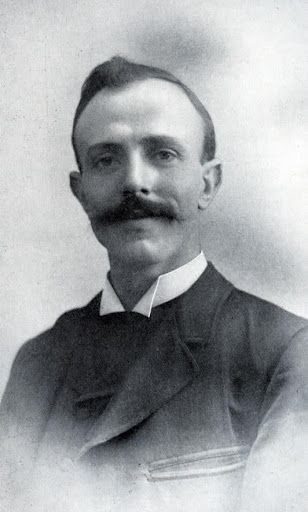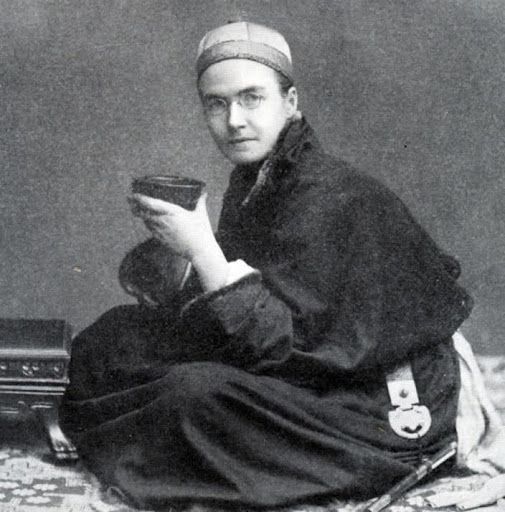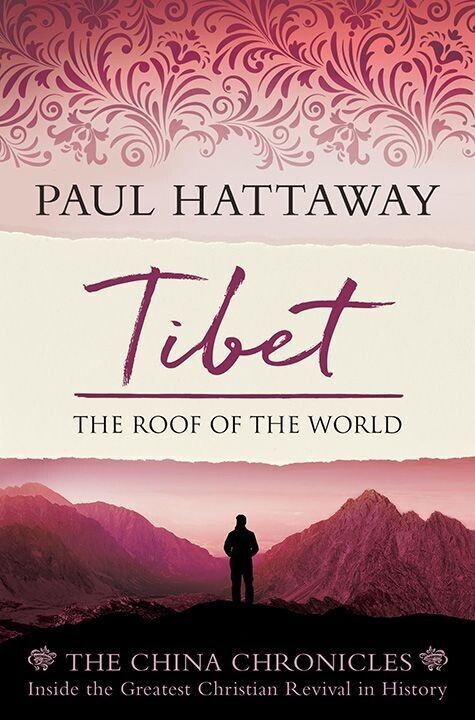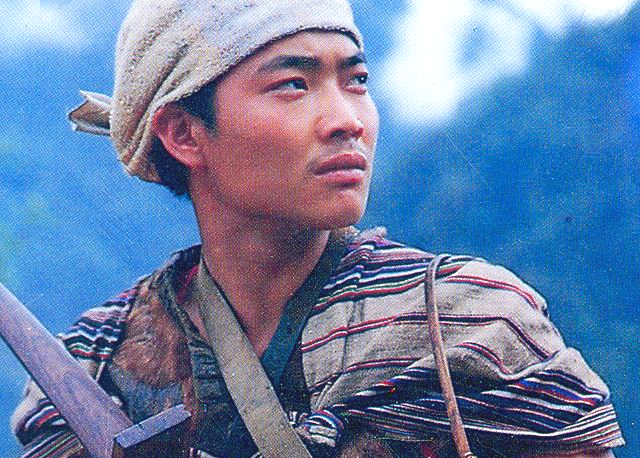Petrus and Susie Rijnhart
The story of Annie Taylor's bold bid to reach Lhasa was still reverberating around Christian circles when another attempt was made to enter the forbidden land from its northern borders.
In 1898, two independent Dutch- Canadian missionaries, Petrus and Susie Rijnhart, hoped to receive permission to preach and conduct medical work in Lhasa. For years the Rijnharts had shared the gospel with Tibetan monks, and frequently visited monasteries near Kumbum (now Ta'er) in the Amdo area.
The 1890s was a time of fierce conflict between the Han Chinese and the Hui Muslims, with thousands of Tibetans being drawn into the conflict. To safeguard the missionaries, a lama invited the Rijnharts to live within the safety of the monastery walls. This afforded Petrus an excellent opportunity for evangelism, while Susie used her skills as a doctor to treat the wounded from the conflict. After one major battle, Petrus angered both the Chinese and the Tibetans when he went to the Hui headquarters and treated the Muslim wounded. Susie recalled:
"It had been misunderstood that because we had helped the Chinese and Tibetan soldiers, we also must share their hatred of their enemies and could not possibly have a kind thought for them. When they saw that the missionary was just as kind and tender to the Muslims as to themselves, they were utterly amazed. The law of Christian kindness impelling love and mercy even for one's enemies was vividly brought to their attention."
While they were living at Tangar (now Huangyuan in Qinghai Province), the Rijnharts treated many Tibetan patients, and made friends with four kushoks—representatives of the Dalai Lama who looked after his interests in the Amdo region. Perhaps buoyed by these connections, in 1898 the fearless couple, with their infant son Charlie, set out on an epic months-long journey toward Lhasa, despite being warned against going by friends and co-workers.
Lhasa lay 800 miles (1,296 km) to the southwest, across arid deserts and snow-bound mountain passes up to 16,000 feet (4,900 meters) above sea-level. It was a journey no team of strong men had been willing to undertake because of the dangers and difficulties, but the young married couple, with their infant son, set out into central Tibet, accompanied by three guides and pack animals carrying a huge supply of food, which the Rijnharts estimated would last them a year.
Petrus and Susie were determined to make it to Lhasa no matter what, but it turned out to be a disastrous trip, with two of the three Rijnharts losing their lives. Not long after their departure,
"Anything that could go wrong did go wrong! They were faced with incredibly bad weather, bad trails, and the suspicions of religious leaders who did not know them and had no reason to accord them the respect they had had in Kumbum or Tangar. Their guides deserted them and then, to add misery upon misery, their one-year-old son, carried on his father's back, died suddenly. They had the sad task of burying him under rocks along the trail."
Susie later wrote about the heartbreak she felt at the death of her son:
"Our only child had brought such joy to our home, and had done so much by his bright ways to make friends for us among the natives. To leave his body in such a cold, bleak place seemed more than we could endure. As we stood over the grave, the little box was lowered...and the cold earth of Tibet, the great forbidden land, closed over the body of the first Christian child committed to its bosom—little Charles Carson Rijnhart, aged one year, one month and 22 days. Mr. Rijnhart rolled a large boulder over the grave to keep wild animals from digging it up."
The Rijnharts were paralyzed with grief at the loss of their beloved son, and decided to turn back along a southerly route. A gang of robbers trailed them, however, looking for an opportunity to strike. After noticing the men, Petrus decided to go and talk with them, hoping a direct approach would show them he was not afraid, and was not worth robbing.
No details emerged to reveal what happened next, but Petrus simply never returned to his waiting wife. The robbers had presumably murdered him. Petrus Rijnhart was only 32-years-old.
For days Susie patiently waited for her husband to return, before realizing he was probably dead. Now alone and stuck in the middle of Tibet surrounded by violent men and wild animals, she clung to her faith, and later recalled:
"I must admit it was a faith amid darkness so thick and black that I could not enjoy the sunshine. Evening found me still alone with God, just as I had been the night before. My undefined fear had shaped itself into almost a certainty, leaving me with scarcely any hope of ever seeing my husband again, and with just as little hope of my getting away from the same people who had seemingly murdered him....
I sat down once more and reviewed the situation, when the thought came: 'I can never get away from here safely anyway. I will never be able to get out of the country, and I am so far from the border that I may as well be killed...and go where my precious husband has gone."
Susie realized she couldn't proceed to Lhasa, but the only other option was to head hundreds of miles toward one of the Tibetan border mission bases. She put her pain and grief aside and courageously continued eastward without shelter, and with little food after some of the pack animals escaped. She employed local guides to help, but they turned against her, and she was forced to threaten the men with a revolver to prevent them from raping and killing her.
For two months she advanced, one step at a time. When she finally reached the CIM base at Kangding in Sichuan Province, the resident missionaries Edward Amundsen and James Moyes mistook her for a Tibetan beggar due to her filthy sheepskin clothes and her skin having turned almost black from exposure to the sun. Her feet were frostbitten, and it took months for her to recover from the harrowing ordeal.
Susie returned to Canada in 1900, where a close friend observed that she had "changed from a bright, dark-haired girl into a quiet, white-haired woman." She was asked if it would be a cross to return to Tibet. "No," she replied, "It would be a cross not to return." She traveled back to Kangding in 1902 as a medical missionary with the Foreign Christian Missionary Society and married James Moyes, one of the two men who had met her after her harrowing journey four years earlier.
As she recovered, Susie Rijnhart shared her experiences in a book, which was called "one of the most stirring missionary sagas of the early 20th century." In February 1908 she gave birth to a son while back in Canada, but her health was poor by that time, and the stress of childbirth caused Susie's death a few days later. She was just 40-years-old.
© This article is an extract from Paul Hattaway's book ‘Tibet: The Roof of the World’. You can order this or any of The China Chronicles books and e-books from our online bookstore.
1. David V. Plymire, High Adventure in Tibet: The Life and Labors of Pioneer Missionary Victor Plymire (Ellendale, ND: Trinity Print'n Press, 1983), p. 25.
2. Plymire, High Adventure in Tibet, pp. 47-48.
3. Plymire, High Adventure in Tibet, p. 51.
4. Plymire, High Adventure in Tibet, p. 64.
5. Plymire, High Adventure in Tibet, p. 65.
6. Covell, The Liberating Gospel in China, p. 70.
7. Plymire, High Adventure in Tibet, pp. 70-71.
8. Plymire, High Adventure in Tibet, p. 73.
9. Plymire, High Adventure in Tibet, p. 74.
10. Plymire, High Adventure in Tibet, p. 79.
11. Plymire, High Adventure in Tibet, p. 86.
12. Plymire, High Adventure in Tibet, pp. 107-108.
13. Plymire, High Adventure in Tibet, p. 114.
14. Plymire, High Adventure in Tibet, pp. 130-31.
15. Plymire, High Adventure in Tibet, p. 192.
16. Plymire, High Adventure in Tibet, pp. 192-93.
17. Plymire, High Adventure in Tibet, p. 197.
18. Plymire, High Adventure in Tibet, p. 217.







